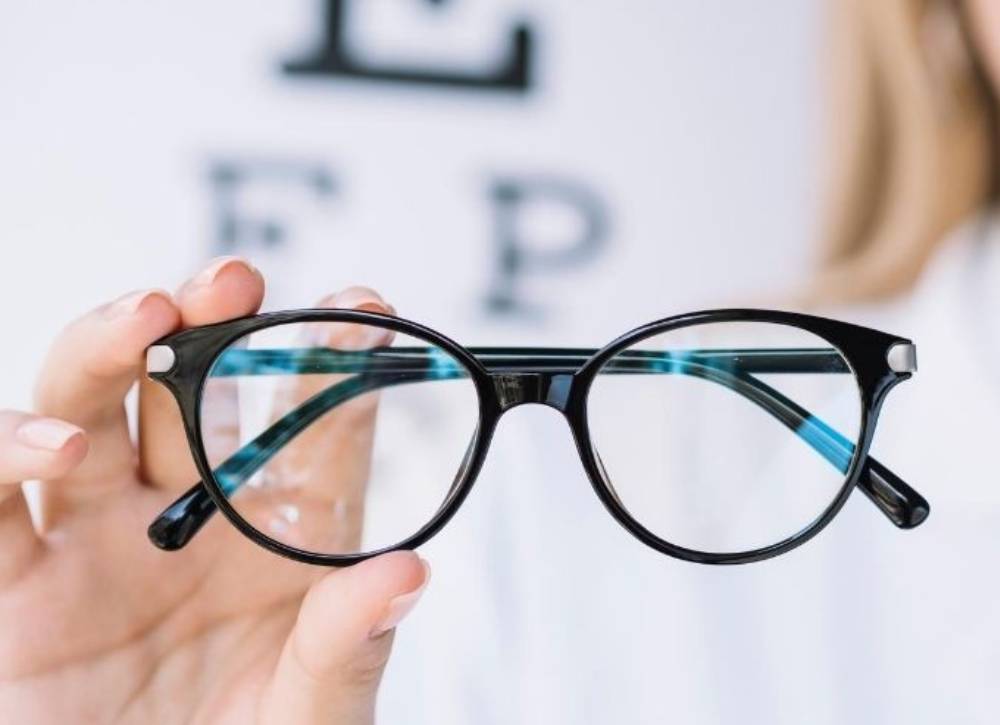When purchasing a pair of glasses, most people will consider the lens materials. Many people want to choose a safe and durable material. So, when it comes to these features, polycarbonate or Trivex is the best choices for your eyeglasses, sunglasses, or sports eyeglasses. So, what is a polycarbonate lens and what is the Trivex lens? What are the differences between them? This post will explain them to you.
What Is Polycarbonate Lens?
Polycarbonate was invented in the 1970s for aerospace applications and is currently used for the helmet visors of astronauts and for space shuttle windshields.
Polycarbonate lenses were introduced in the early 1980s in response to a demand for lightweight, impact-resistance lenses. Since then, polycarbonate glasses have become standard for safety glasses, sports goggles, and children’s eyewear.
Polycarbonate glasses come with a lot of features such as thin and light and they provide 100% percent UV protection and are up to 10 times more impact-resistance than plastic pr glasses lenses.
What Is Trivex Lens?
Trivex is another light, impact-resistant eyeglasses lenses. Like polycarbonate lens, Trivex is an excellent lens material for safety applications and children’s eyewear.
Trivex lenses are made of a urethane-based monomer. They are produced using a slower, cast molding process similar to how regular plastic lenses are made. The liquid lens material is slowly baked until is set. This gives Trivex lenses the advantages of sharper optics than injection-molded polycarbonate lenses.
Polycarbonate vs Trivex Lens: Which One Is Better?
We have introduced what the polycarbonate lens and Trivex lens are. What are the differences between the polycarbonate lens and the Trivex lens? So, in this section, we will show you the differences between these two lens materials.
- Thickness:Polycarbonate glasses are about 10% thinner than Trivex lenses.
- Weight:Polycarbonate glasses are around 10% heavier than the Trivex lens.
- Optics - central:Trivex lenses have less internal stress and may produce sharper central vision than polycarbonate lenses.
- Optics - peripheral:Trivex lenses have a higher Abbe value so they can produce sharper peripheral vision with less chromatic aberration than polycarbonate lenses.
- Impact resistance:Polycarbonate and Trivex lenses have comparable impact resistance.
- UV protection:Both polycarbonate and Trivex lenses can block 100 percent of the sun’s harmful UV rays and provide protection for your eyes.
- Availability:Polycarbonate lenses have a wider variety of lens designs than Trivex lenses.
- Cost:Trivex lenses are expensive than polycarbonate lenses.
As for Trivex vs polycarbonate, you may have known some information from the above part. You can choose either lens material based on your like when purchasing the glasses.
To sum up, this post from Koalaeye Optical has shown polycarbonate lenses vs Trivex. If you have any different ideas for polycarbonate vs Trivex lenses, you can share them in the comment zone. If you have any problems with glasses or sunglasses, you can contact us via the email service@koalaeye.com and we will reply to you as soon as possible.





































